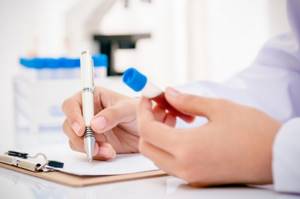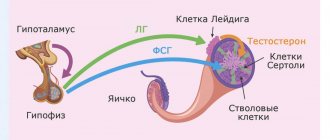Liver tests are the most popular laboratory blood test, which gives a general idea of the activity of the specified internal organ. An objective assessment helps the doctor determine possible pathologies of this organ, for which complex biochemical indicators should be thanked. The system is also aimed at monitoring the dynamics of possible undesirable changes, which is typical for long-term therapy. Most often this concerns a long course of treatment with a huge range of pharmacological products that have a hepatotoxic effect. We are talking about classical chemotherapy during the treatment of cancer, pulmonary tuberculosis, systemic pathology, the use of antibacterial agents and immunomodulators.
Indications for use

The development of liver diseases is indicated by the following clinical signs:
- heaviness and discomfort in the right hypochondrium;
- bitter taste in the mouth;
- weight loss for no apparent reason;
- darkening of urine;
- stool discoloration;
- yellowing of the skin, eye sclera, mucous membranes;
- dyspepsia;
- fast fatiguability.
If such symptoms appear, you should contact a hepatologist or gastroenterologist and donate blood for a biochemical analysis. Indications for liver tests:
- diagnosis of chronic liver diseases;
- suspicion of the development of cirrhosis;
- diseases accompanied by metabolic disorders in the body, affecting the functioning of the liver (for example, diabetes);
- diagnosis of inflammatory processes in the liver;
- intermediate diagnostics to assess the effectiveness of treatment for confirmed liver pathologies;
- chronic alcoholism;
- changes in the structure and size of the liver identified during ultrasound or other diagnostic methods.
Liver tests are prescribed for patients undergoing treatment with hepatotoxic drugs.
Diagnosis of viral and autoimmune liver diseases
Diagnosis of viral and autoimmune liver diseases is carried out taking into account the results of screening. In case of severe deviations from the norm, as well as if a biochemical blood test reveals the presence of antibodies, there is a viral disease that must be treated urgently. The process of autoimmune disease is characterized by the fact that the immune system confuses healthy cells with bacteria and begins to fight them.
Hepatitis tests can detect the disease at different stages. Treatment for type 1 hepatitis is the use of immunosuppressants followed by restoration of immune function. If the disease is not treated, its development will lead to cirrhosis. Type 2, most often found in children under 14 years of age, is characterized by immunity to such drugs and requires complex treatment.
Don't neglect the alarming symptoms in the liver area! Timely diagnosis and normalization of the condition of the most important organ will quickly return you to a full life.
Preparing for the examination
To obtain reliable results for the study, it is necessary to follow the preparation rules. For two or three days before donating blood, it is necessary to exclude serious physical activity and stressful situations. You should not drink alcohol, fatty foods, or foods that are difficult to digest. On the eve of visiting the laboratory, you should have a light dinner, do not overuse coffee and strong tea. The last meal occurs no later than 8-12 hours before blood donation. You cannot smoke 2-3 hours before.
If the patient is taking any medications, you need to inform the doctor who referred you for liver tests.
Factors that influence the results of the analysis:
- failure to follow recommendations for preparing for blood donation;
- the patient is overweight;
- taking certain medications;
- following a vegetarian diet;
- pregnancy;
- prolonged application of a tourniquet when drawing blood.
Sources
- García-Martínez B.A., Montes S., Tristán-López L., Quintanar-Guerrero D., Melgoza L.M., Baron-Flores V., Ríos C. Copper biodistribution after acute systemic administration of copper gluconate to rats. // Biometals - 2021 - Vol - NNULL - p.; PMID:33900531
- Stolte B., Nonnemacher M., Kizina K., Bolz S., Totzeck A., Thimm A., Wagner B., Deuschl C., Kleinschnitz C., Hagenacker T. Nusinersen treatment in adult patients with spinal muscular atrophy: a safety analysis of laboratory parameters. // J Neurol - 2021 - Vol - NNULL - p.; PMID:33899154
- Sanyal AJ., Ling L., Beuers U., DePaoli AM., Lieu HD., Harrison SA., Hirschfield GM. Potent suppression of hydrophobic bile acids by aldafermin, an FGF19 analogue, across metabolic and cholestatic liver diseases. // JHEP Rep - 2021 - Vol3 - N3 - p.100255; PMID:33898959
- Wang S., Shi H., Liu T., Li M., Zhou S., Qiu X., Wang Z., Hu W., Guo W., Chen X., Guo H., Shi X., Shi J ., Zang Y., Cao J., Wu L. Mutation profile and its correlation with clinical pathology in Chinese hepatocellular carcinoma patients. // Hepatobiliary Surg Nutr - 2021 - Vol10 - N2 - p.172-179; PMID:33898558
- Minici R., Ammendola M., Manti F., Siciliano MA., Minici M., Komaei I., Currò G., Laganà D. Safety and Efficacy of Degradable Starch Microspheres Transcatheter Arterial Chemoembolization (DSM-TACE) in the Downstaging of Intermediate-Stage Hepatocellular Carcinoma (HCC) in Patients With a Child-Pugh Score of 8-9. // Front Pharmacol - 2021 - Vol12 - NNULL - p.634087; PMID:33897422
- Minici R., Ammendola M., Manti F., Siciliano MA., Giglio E., Minici M., Melina M., Currò G., Laganà D. Safety and Efficacy of Degradable Starch Microspheres Transcatheter Arterial Chemoembolization as a Bridging Therapy in Patients with Early Stage Hepatocellular Carcinoma and Child-Pugh Stage B Eligible for Liver Transplant. // Front Pharmacol - 2021 - Vol12 - NNULL - p.634084; PMID:33897421
- Kumar A., Sharma A., Bansal PD., Bahetra M., Gill HK., Kumar R. A comparative study on the safety and efficacy of naltrexone versus baclofen versus acamprosate in the management of alcohol dependence. // Indian J Psychiatry - 2021 - Vol62 - N6 - p.650-658; PMID:33896969
- Leal LN., Doelman J., Keppler BR., Steele MA., Martín-Tereso J. Preweaning nutrient supply alters serum metabolomics profiles related to protein and energy metabolism and hepatic function in Holstein heifer calves. // J Dairy Sci - 2021 - Vol - NNULL - p.; PMID:33896629
- Pascottini OB., De Koster J., Van Nieuwerburgh F., Van Poucke M., Peelman L., Fievez V., Leroy JLMR., Opsomer G. Effect of overconditioning on the hepatic global gene expression pattern of dairy cows at the end of pregnancy. // J Dairy Sci - 2021 - Vol - NNULL - p.; PMID:33896624
- Ladisa C., Ma Y., Habibi HR. Seasonally related metabolic changes and energy allocation associated with growth and reproductive phases in the liver of male goldfish (Carassius auratus). // J Proteomics - 2021 - Vol - NNULL - p.104237; PMID:33894374
Decoding the results
Having received the results of a blood test for liver tests, they consult a doctor for a transcript. Normal liver enzyme values vary depending on age and gender, so the data should be analyzed by a qualified hepatologist or gastroenterologist.
The biochemical analysis includes the study of the following blood parameters:
- bilirubin;
- ALT (alanine aminotransferase);
- AST (aspartate aminotransferase);
- GGTP (gamma-glutamyl transpeptidase);
- ALP (alkaline phosphatase);
- proteins;
- prothrombin index or prothrombin time.
Additionally, according to indications, other biochemical parameters can be studied:
- serum iron concentrations;
- haptoglobin;
- cholesterol;
- insulin;
- urea.
Bilirubin
The level of this substance in the blood is an important diagnostic sign in determining liver pathologies. Bilirubin is present in the human body in two fractions: direct and indirect. This compound is formed during the breakdown of red blood cells. Hemoglobin, myoglobin, and cytochromes are broken down into indirect bilirubin, which is then converted into the direct fraction. This occurs in functional liver cells.
During the biochemical analysis, the total level of bilirubin is studied, and, if necessary, individual fractions are examined. The norms for the content of this compound are the same for men and women. In a healthy person, from 8.5 to 20.5 µmol/l of total bilirubin is detected in the blood, of which the direct fraction is from 2.2 to 5.1 µmol/l.
An increased level of total bilirubin is observed in the following pathologies:
- tumor, inflammatory, cirrhotic processes in the liver;
- obstructive jaundice;
- hemolytic anemia;
- genetic liver diseases associated with metabolic disorders (Crigler-Najjar syndrome, Gilbert's disease).
An increase in bilirubin levels is often observed in newborns due to adaptation of the liver.
High levels of indirect bilirubin are associated with pathological hemolysis (for example, in hemolytic anemia) or with impaired liver function in disposing of toxic substances. An increase in the content of direct bilirubin often means the development of diseases accompanied by cholestasis.
ALT and AST
The ALT enzyme is found in hepatocytes, and an increase in its level in the blood is associated with the destruction of these functional liver structures. AST protein is found in the highest concentration in myocardial tissues, but is also present in the liver, lungs, and kidneys. Its increase also indicates the active destruction of hepatocytes. As a rule, the ratio of ALT and AST is studied.

Normal levels of these enzymes are: ALT – 0.1-0.68 µmol/l, AST – 0.1-0.45 µmol/l. The normal ratio is called the de Ritis ratio and is 1.33.
The level of ALT and AST increases in the following pathologies:
- cirrhosis;
- hepatosis and hepatitis, including in pregnant women;
- toxic liver damage;
- development of a tumor process or metastases in liver tissue;
- hemolytic anemia.
High concentrations of these liver enzymes in the blood can be a side effect of taking certain medications.
GGTP
This enzyme is necessary for metabolic processes involving amino acids. An increase in GGT indicates active destruction of hepatocytes due to liver pathology. Changes in the concentration of this indicator are considered in dynamics. Consistently high values indicate progression of liver cirrhosis. The level of GGT increases due to chronic alcohol intoxication, as well as in case of poisoning, including drugs.
alkaline phosphate
This enzyme is present in the liver and bile ducts. Elevated values of alkaline phosphatase are usually detected in diseases accompanied by cholestasis. Unlike adults, in children this enzyme is almost always elevated, which indicates active growth.
Albumen
These are blood proteins produced by the liver. Normally, the albumin level is 35-50 g/l (about 50 percent of all protein fractions in the blood). The development of a pathological process in the liver reduces the production of these protein compounds. A poor albumin level indicates the following conditions:
- lack of protein component in the diet, fasting;
- hepatitis, hepatosis, cirrhosis;
- inflammation of the pancreas;
- cystic fibrosis;
- severe infections;
- hyperfunction of the thyroid gland.
Prothrombin index
Blood clotting depends on proteins produced by the liver. As the pathology progresses, the production of these compounds decreases, which impairs coagulation. During the study, the time it takes for a blood clot to form is calculated. More often, doctors calculate the coefficient (how the period of clot formation in the test sample relates to the norm). The prothrombin index in a healthy person ranges from one to one and a half.
You can donate blood for liver tests at any of the medical centers presented on the website. The price for the study ranges from 160 to 2500 rubles. The cost of the service depends on the scope of the study and the level of the laboratory.
What determines the quality of ultrasound?
For ultrasound diagnostics of the liver, sensors of different frequencies are used. Each of them penetrates to a different depth of the human body. Which sensor the doctor chooses will depend on the patient’s body volume and the condition of the abdominal fat layer. Typically 3.5-5 MHz sensors are used. They help to visualize formations with a diameter of 1-3 mm. A sensor with a frequency of 3.5 MHz allows you to obtain an image of tissues and organs located at a distance of 12-28 cm from the meter. Such sensors are used to study adult patients, especially overweight people. Sensors with a frequency of 5 MHz provide a good “picture” of structures that are located at a distance of 4-15 cm from the surface. They are used in the examination of children, adolescents and patients with asthenic body structure.








